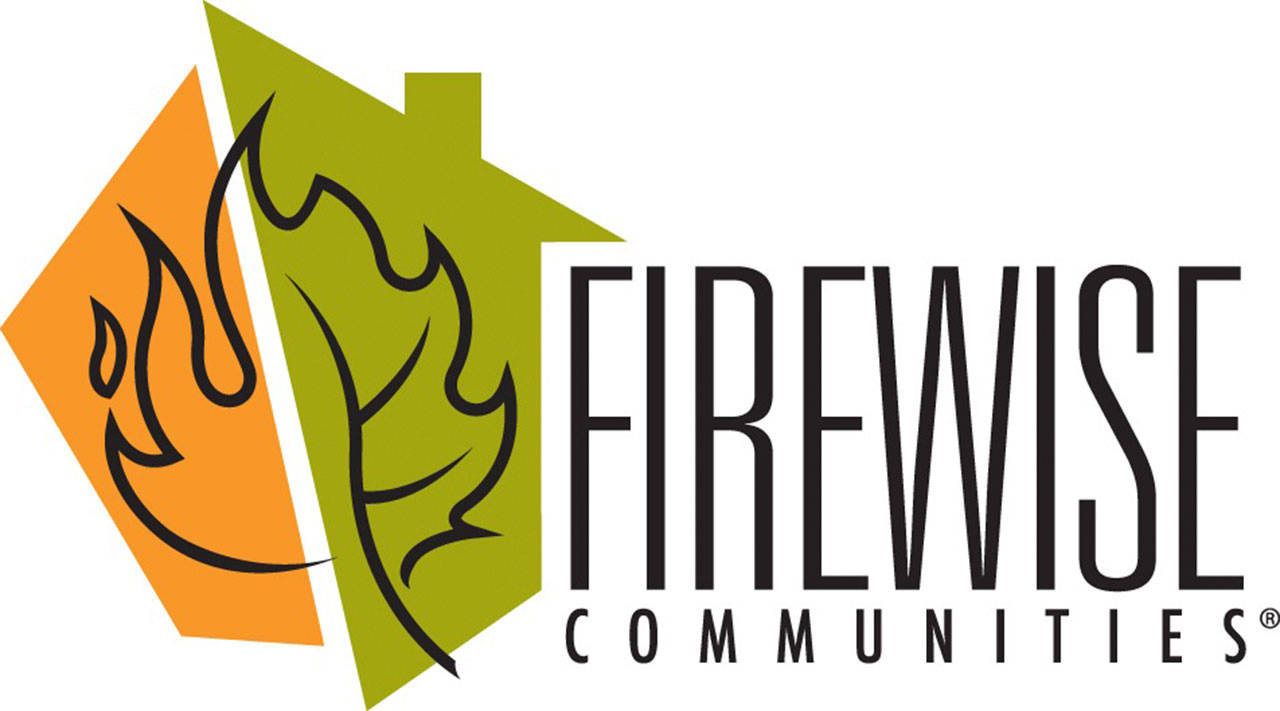Submitted by the Washington Department of Natural Resources
Even with this wet, rainy spring, wildfire season officially begins Saturday, April 15, as specified by state law.
“All this snow and rain may delay our fire season, but our forests always face the threat of wildfire,” said Commissioner of Public Lands Hilary Franz. “We’re going to do everything we can to be ready for fire season, and I encourage all our neighbors to do the same.
Property owners can reduce fire risk to their homes and lands by keeping dead vegetation off roofs and away from buildings. The Firewise programexplains how to use these techniques and offers incentives to communities who follow Firewise principles.
Prediction for this summer’s weather is available from the National Weather Service. While mountain basins currently have an above average snowpack, the risk of wildfires can change rapidly during spring’s warmer, dryer weather. Among other things, that means people working in the woods or clearing land need to have fire prevention equipment on hand.
Last year, more than 16,400 acres of DNR-protected lands were consumed by 807 wildfires. Out of 807 wildfires, 90 percent were human-caused.
Washington’s summer fire rules
Washington’s “summer fire rules” are in effect April 15 through Oct. 15. These rules apply to the 13 million acres of private and state forestlands protected from wildfire by DNR.
These regulations affect loggers, firewood cutters, land clearers, road builders, heavy equipment operators, off-road motorcyclists, and others. During fire season, people using motorized equipment in the woods must have approved spark arresters and follow fire safety precautions. In addition, those working in the woods must have fire prevention and extinguishing equipment in good working order at the job site and workers trained in proper use.
The rules are intended to prevent forest fires and to extinguish small fires before they spread to the forested lands. Those same rules restrict cigarette smoking in forested areas on roads, gravels pits, or other clearings. They also prohibit lighting fireworks on forestland.
Stay connected during wildfire season
* DNR Fire Update: http://www.dnr.wa.gov/Publications/rp_fire_currentfireinfodailyupdates.pdf
* Incident Information System (InciWeb)
Industrial restrictions available by phone and the internet.
Industrial Fire Precaution Levels may change daily and classify varying levels of potential fire hazard in different parts of the state. People who work in the woods must observe the IFPL. More information is available from the following sources:
* DNR’s website. Click to review regional precaution levels, a map of current shutdown zones, and a copy of DNR’s Industrial Fire Precaution Level Bulletin.
* DNR’s toll-free business line at 1-800-527-3305 plays a message identifying daily industrial fire precaution levels, which are listed by geographical region. The hearing impaired can phone Telephone Device for the Deaf at 1-800-833-6388.
* Email DNR at RPD@dnr.wa.gov. Ask questions or request a copy of DNR’s Industrial Fire Precaution Level Bulletin or additional information on safe outdoor burning of forest debris and safe recreational campfire tips.
DNR’s wildfire mission
Administered by Commissioner of Public Lands Hilary Franz, DNR is responsible for preventing and fighting wildfires on 13 million acres of private, state and tribal-owned forestlands. DNR is the state’s largest on-call fire department, with more than 1,300 employees trained and available to be dispatched to fires as needed. During fire season, this includes more than 800 DNR employees who have other permanent jobs with the agency and more than 500 seasonal employees hired for firefighting duties. Additionally, adult offenders from the Department of Corrections and juvenile offenders from the Department of Social and Health Services-Juvenile Rehabilitation Administration support firefighting efforts through DNR’s Correctional Camps Program. DNR also participates in Washington’s coordinated interagency approach to firefighting.




